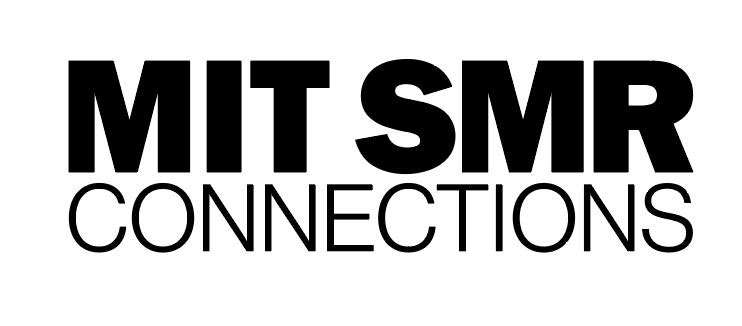Introduction
The move to hybrid work has sparked controversy among prominent business leaders. Some view remote and hybrid work as a mere chapter in history—a means to an end during a global pandemic. Yet, innovative leaders are increasingly seeing hybrid work as the future, paving the way for a more inclusive, creative, and technologically advanced workforce.
Though 64% of employees prefer hybrid work, it is not without its challenges. Many young adults who are just starting their careers—along with employees who previously had little experience with digital tools—are struggling to adjust to this new landscape. While people appreciate more family time and reduced commutes, they are also struggling with work/life balance and the need for more direct support.
Research shows us that hybrid work is here to stay, and teams are looking to their leaders to clear a path and make hybrid work as effective as possible. Here are four initiatives leadership can take to improve hybrid work and bring balance to their teams. (And don’t miss our Heroes of Hybrid eBook download at the end of this article on how tech-forward executives remove friction and bolster human connection in the future of work.)
Build culture
The phrase “company culture” has become commonplace, but what does it actually mean? Having a strong company culture goes beyond free perks and ping-pong tables in the office, especially now that people can work from anywhere. A strong company culture empowers employees to embrace diversity, take accountability, and lead with empathy so that all employees—and their ideas—can shine.
But how does this translate to a hybrid work model? Here are some steps to get you started:
Check in
Building a relationship with your team members is one of the top responsibilities of a team lead, yet the transition to hybrid work has left some employees feeling disconnected from leadership. Instead of relying on passing each other in the halls and in-person meetings, team leads need to be more deliberate with their employee interactions. Make time to connect with your team through virtual or in-person, one-on-one meetings. If your team is too big for this to be feasible, consider setting aside time once a week where you are reachable by anyone on the team for a phone call, video chat, or in-person meeting, like a professor running office hours. If you are struggling to meet with each team member individually, find other ways to directly connect with them—like sending them a chat once or twice a week to ask how their weekend was or to check their workload. Creating a habit of regular check-ins with your employees will forge a more trusting relationship that will positively reflect on your team and company culture.
Encourage collaboration
The strongest teams know each other well and can lean on each other’s expertise to produce the best work. But collaboration like this doesn’t happen on accident. To foster collaboration, ask yourself, How can I build trust throughout my team? How can I celebrate the great work that’s being done?
Trust building doesn’t need to happen in a formal seminar—and honestly, it shouldn’t! Trust stems from moments of spontaneous connection. Elizabeth Bieniek, a startup founder and director of engineering for a world-renowned tech conglomerate, found that strong collaboration is built on a foundation of trust and empathy. She is still asking herself, “How do you build a rapport? How do you get your team to put themselves in the shoes of the other person and feel empathy towards their situation? I would say that you build empathy based on connection, being in the same scenario and not having a forced agenda.”
Though it may not be possible for true social spontaneity to happen virtually, leaders can organize unstructured meeting times where everyone gets to chat about something other than work. Another great way to build connection is by celebrating the impressive projects your team has been working on. This will make your team members feel appreciated, and it will let everyone know the areas of expertise their coworkers have and how to lean on them in the future.
Let the team lead
To establish what values and behaviors are important to your team, the best thing you can do is ask: What do you see as unique about our team? How do you want our team to function? What are our core tenets? Listening to everyone’s voices will form bonds and build a culture that aligns with all team members.
Set aside time for creativity and free play
Many businesses believe that creativity has been damaged through hybrid work. It is personal, vulnerable, and often difficult to make space for virtually. If a team is overextended, unfamiliar with one another, or has hands-off leadership, creativity can quickly become an afterthought, especially in a hybrid environment.
To make creativity a priority, set aside time for brainstorming. Kick off your brainstorming sessions by playing fun, creative games with your team. Whether it is a virtual game like Scribble.io or an in-person game like charades, setting aside time for play can boost the team’s energy, make them more comfortable with one another, and spark inspiration.
Finding the balance between intentional connection and the relaxed nature of brainstorming and creativity can be tough, but it’s worth putting in the effort. Workplace Design and Experience Executive Ray Milora says, “Are we going to be perfect about it? Absolutely not. But we’re going to try. At least we’re going to move forward, make a mistake, and course-correct.”
Offer support
According to research by McKinsey & Company, the pandemic has accelerated digital transformation by 7 years, leaving a portion of the workforce struggling with the hybrid work transition.
Many younger employees were onboarded to the first jobs of their career during a global pandemic. After months of nothing but on-screen interactions, these employees still feel like strangers in their own company. As more people start going into the office under a hybrid model, these employees will need to learn the inner workings of the company to catch up to the employees with previous experience.
For those who grew up without access to technology or those who entered their career before digital tools were widely adopted, the level of digital fluency necessary for a hybrid model can be unnerving and may negatively affect their confidence and their work.
To make matters worse, 35% of midsize organizations cut all training for their employees in the switch to remote and hybrid work. How can employees who are struggling seek the support they need when training or courses aren’t being offered by the company?
Digital fluency should be a priority across all future-focused organizations, but gaps in experience, equity, and resources can lead to a team with varying degrees of corporate experience and digital fluency. Focusing on skill-building will make hybrid work run as smoothly as possible—but it’s crucial to tailor training to meet each team member where they are.
Respect work/life boundaries
Though hybrid work has been a win for work/life balance in some ways, it has also contributed to new stressors. Overall, people enjoy spending less time commuting and more time with their families. On the other hand, burnout from the pressure to be “always on” has stretched some employees to their breaking point.
As Stefan Bachmann, a leading Fortune 500 HR executive says, “We need to get better at empowering people to switch off and not be online all the time. How do you turn off? How do you find balance?”
While busy times of the year and late nights do happen on occasion, leaders need to set a good example of work/life balance for their team by setting reasonable working hours, logging off for family events, and making room for hobbies and leisure. With this example set at the top, employees are much more likely to set reasonable expectations for themselves and avoid burnout.
Here are some other important work/life boundaries:
- Do not contact employees outside of working hours. If you have decided to work after hours, schedule your emails to send the following morning. If you have something quick you’d like to discuss with your employee, either make a note of it and send them a chat in the morning, or make it clear that no chats should be responded to once they’ve logged off for the day.
- Encourage employees to log off once they reach eight productive hours for the day. There will always be more work to be done, more projects to finish up, and more emails to respond to. Encourage your team to log off after an honest day’s work so they can rest and enjoy time with their families.
- Encourage employees to take PTO. Your team works hard for their time off. When they take PTO, celebrate that! Ask them to stay away from their work devices to fully enjoy their vacation.
Sticking to these boundaries will help your employees feel respected and will prevent burnout from your team working unsustainable hours.
Start improving your hybrid work team today
Embracing hybrid work can be a challenge for leadership, and there are some areas we haven’t quite figured out. But if leaders show a strong interest in building culture, allowing space for creativity, offering support, and valuing work/life balance, it will certainly help lead their team on the right path.
Interested in learning more about hybrid work? Read about how three different executives see the future of hybrid in our new eBook.





